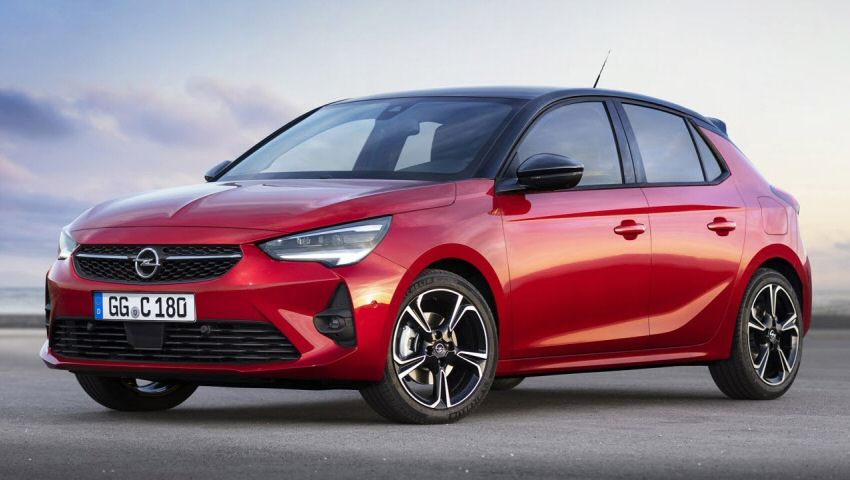
The 2020 Vauxhall Corsa has plenty going for it
The beginning of the 90s welcomed in the very first Vauxhall Corsa. 2 million sales on itís now one of the UKís most recognisable cars. In fact, in 2019 twice as many Corsas were sold than any other model and for 2020 thereís a new one.
This 5th generation model (technically the 6th in Europe) comes at a pretty hectic time for the Luton brand. This is because this is the first fully new car that Vauxhall has released since PSA took over. In fact, thereís was a new Corsa being readied under the former General Motors ownership too. However, this project was canned and so development started from scratch and the new car was turned around in an incredible 30 months. The Corsa rides on the very latest PSA Group platform know as CMP. Itís a platform thatís going to become pretty common over the next few years and will also form the basis of the Peugeot 208, Peugeot 2008 and theDS3 Crossback among others. In this short review weíre going to try and find out if Vauxhall have actually managed to give its most important model in a generation a unique character.
What stands out most about the 2020 Corsa is just how different it is to any of the models that came before it. For example, although the styling looks a lot wider than before itís actually a millimetre narrower which is a very impressive trick that Vauxhall have managed to do with the design. Although itís narrower itís also gown in length by 39 millimetres and the wheelbase is up too. Itís all helped by the fact that itís actually a bit lower than the old model making it look a lot sportier. If you take a look at the side profile youíll see that the bonnet is lower and longer than before and less of an MPV shape which adds to the sporty appearance. Add the wheels, that range from 16 to 17 inches, and the contrasting roof and what you have is a very smart look though not quite as pretty as the Peugeot 208. Saying that, itís still a very tidy looking car and thereís a bigger benefit to this new shape. Vauxhall say that this is now the most aerodynamic car in its class which means that thereís less wind noise than in previous Corsas.
Just like on the outside the Corsa is a little more sensible on the inside than its French cousin. Whereas the Peugeot 208 has a really small steering wheel with digital dials placed above them the Corsa gets the dials between the steering wheel and a normal big sized round steering wheel. It canít quite compete with the 208ís unique style and while it feels solid enough it does have a few more hard scratchy plastics dotted around the cabin. Thereís a decent amount of tech inside the Corsa such as the digital dials offered on some trims. The customisable display lets you look at navigation and trip functions but the small screen just looks a little bit lost in the instrument binnacle, particularly when you compare it to the gloriously huge display in the Renault Clio. The top spec Elite nav and Ultimate Nav models come loaded with kit such as a heated steering wheel, a panoramic sunroof and even massaging seats. A 10-inch infotainment system is also fitted to the top level trims while the remaining trims get a 7-inch version. Theyíre largely the same as the ones used in various Peugeot and Citroens and while it looks pretty the menu layout arenít intuitive as the ones you get on rival cars from the likes of the VW Group, Hyundai and Kia. On the plus side the Corsa does keep physical controls for the heating functions so you donít have to keep faffing around the touchscreen just to change the fan speed as you have to in the 208. Standard equipment in the SE trim include 17 inch alloy wheels, Apple Car Play and Android Auto, air conditioning, land departure warning and traffic sign recognition.
When you sit in the back of the Corsa youíll find it a little bit more cramped than in some of its rivals. You wonít find a large amount of head or knee room for average sized adults unlike you experience in rivals cars such as the SEAT Ibiza and Hyundai I20. Practicality-wise thereís not much on offer that you wouldnít find in other cars but you do get a couple of handy USB ports located at the bottom of the armrest. Thereís more to the back seats than just the space. This is because as part of Vauxhallís efforts to save weight wherever possible the back bench weighs 4.5 kilos less than the old one. The seats are just part of a diet that means that the 2020 Corsa weighs about 10% less than the old one. The body is 40 kilos lighter yet 15% stiffer. The use of aluminium for the engines and bonnet have saved a further 17 kilos at the front while the front seats are lighter too. What this all means is that the entry-level Corsa tips the scales at just under 980 kilos. This should make it feel a lot livelier on the road Ė but does it?
Itís no secret that previous versions of the Vauxhall Corsa werenít actually that good to drive. However, we have to say that things have improved immensely in the 2020 version. Though this car is very similar under the skin to the Peugeot 208 the Corsa is set up to feel just a little sportier. This means that the Corsa rides on the firmer side in the super-mini class but is still comfortable enough. The lack of weight means that this car feels agile on the road though it feels set up to be safe and sensible rather than exciting. The steering is precise and itís got a really nice weighting to it. The big question is whether itís as good to drive as a Ford Fiesta. The answer to that question isÖnot quite. What it is though is dead easy to drive and this is whatís going to matter to most people looking for a car like this. The lack of weight makes this car above average to drive in the class and it really helps when it comes to performance too. The car we tested had a 1.2 litre turbocharged petrol engine with 99 brake horse power (bhp). Itís a great engine which is smooth, lively and everything youíd need from an engine in a super-mini. Above all of this the Corsa also promises to be cheaper at the pumps. Youíll have no problem averaging around 44 miles to the gallon (mpg) on hilly, twisty country roads. If you drive it less enthusiastically you can then expect to achieve around 50 mpg when paired with a 6-speed manual gearbox. Itís not the best transmission to use but it does get the job done nicely. Itís worth noting that thereís also an 8-speed automatic available with this engine.
The petrol range kicks off with a non-turbocharged 1.2 litre unit where it makes a learner friendly 74 bhp and comes with a 5-speed manual gearbox. Thereís also a 1.5 litre diesel option that will give you 101 bhp and comes as a 6-speed manual only. Finally, thereís the Corsa-e which is a fully electric model that pairs a 134 bhp electric motor with a 50 kilowatt battery with a range of about 200 miles.
Overall, the Corsa has plenty going for it. Itís easy to drive, itís built well and should be really cheap to run. However, it doesnít quite manage to lead the class in any one area. As far as we can see it still looks like both the Renault Clio and Ford Fiesta remain the best super-mini choices on the car market. If you feel the Corsa is the right car for you then head down to DesperateSeller.co.uk where we have a multitude of used Vauxhall Corsa cars for sale.













